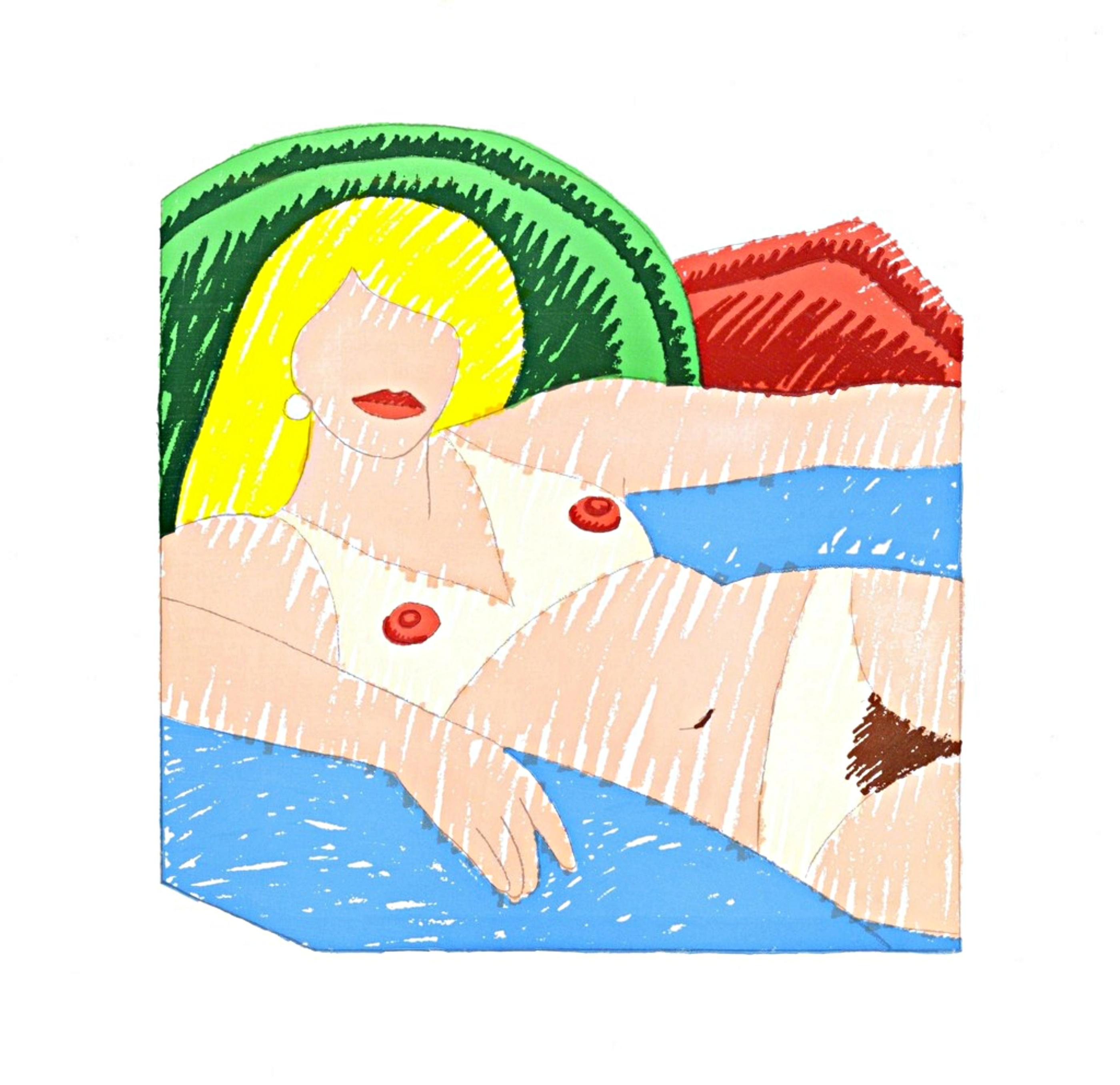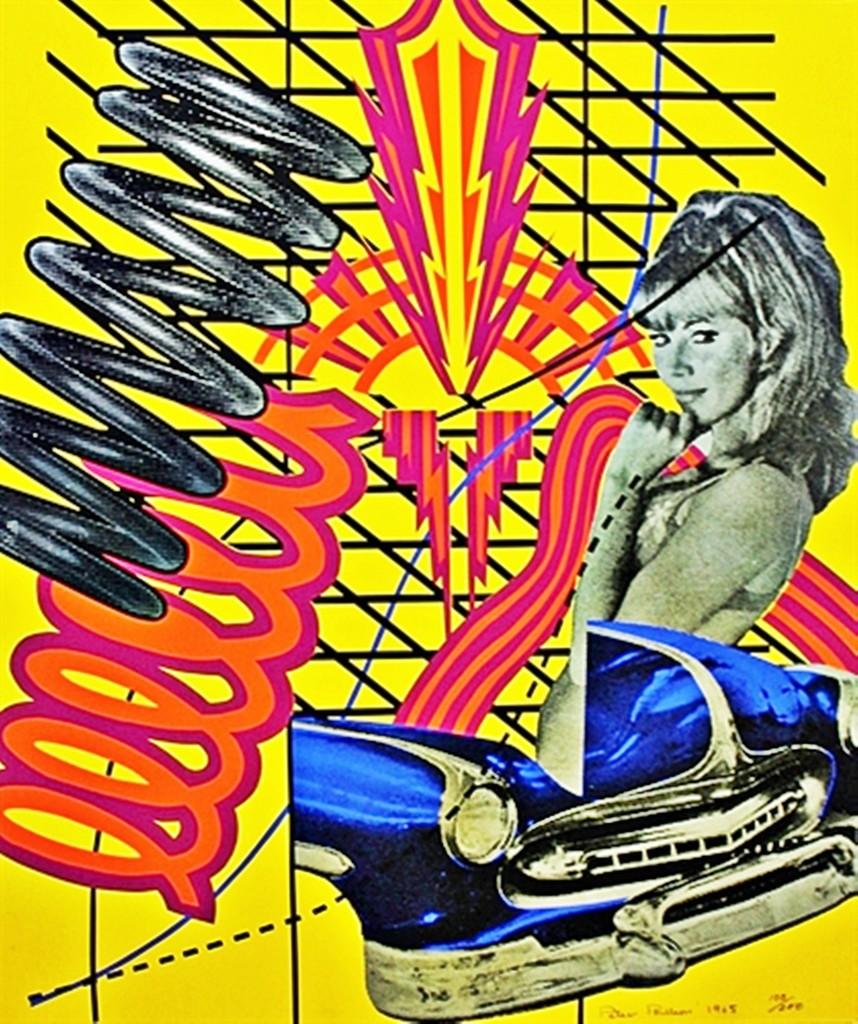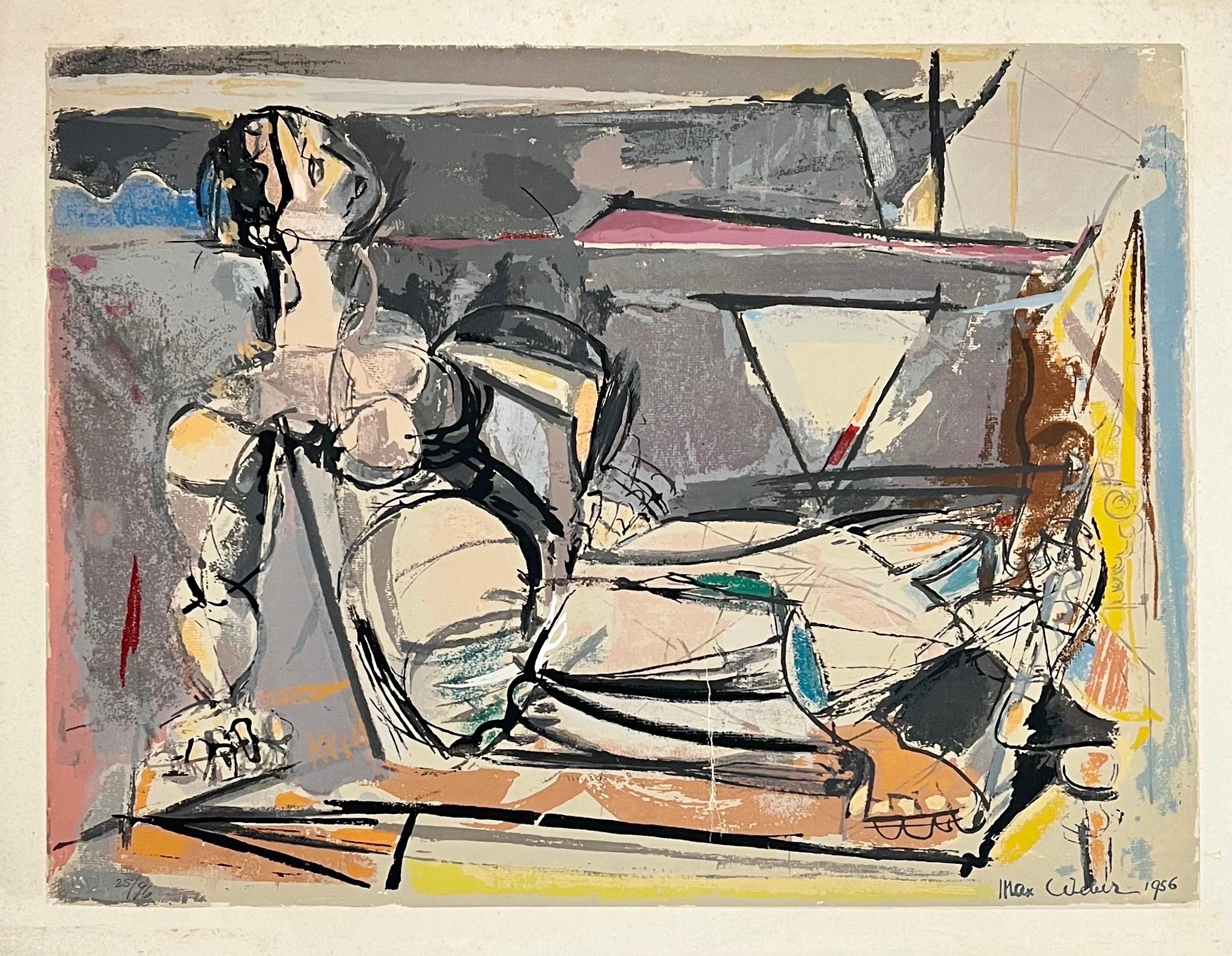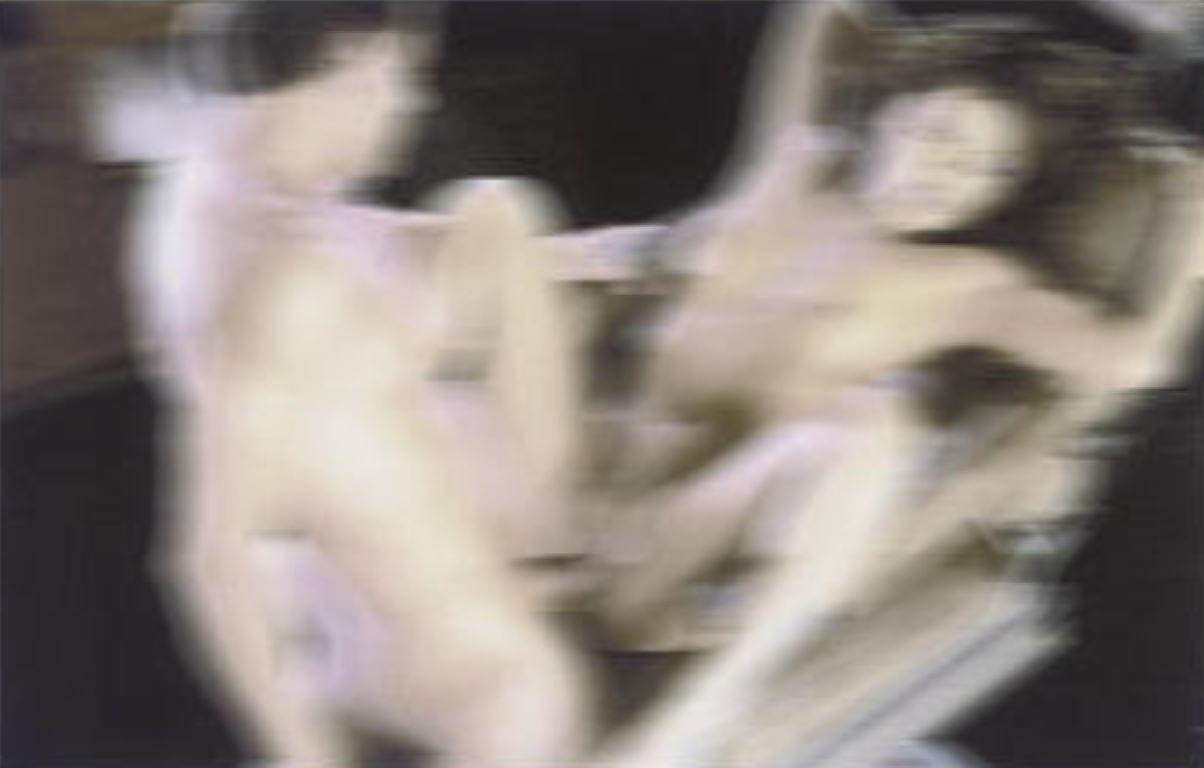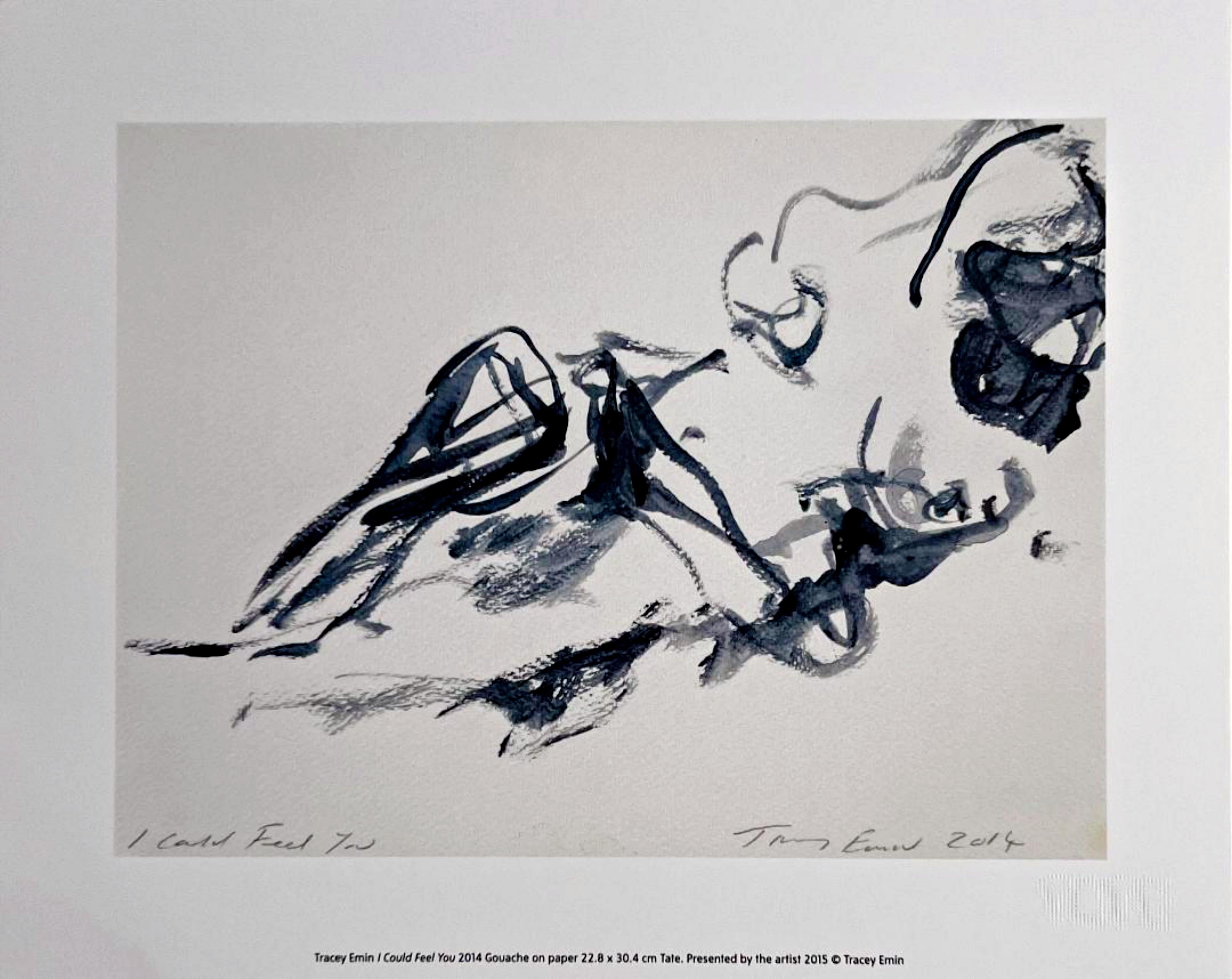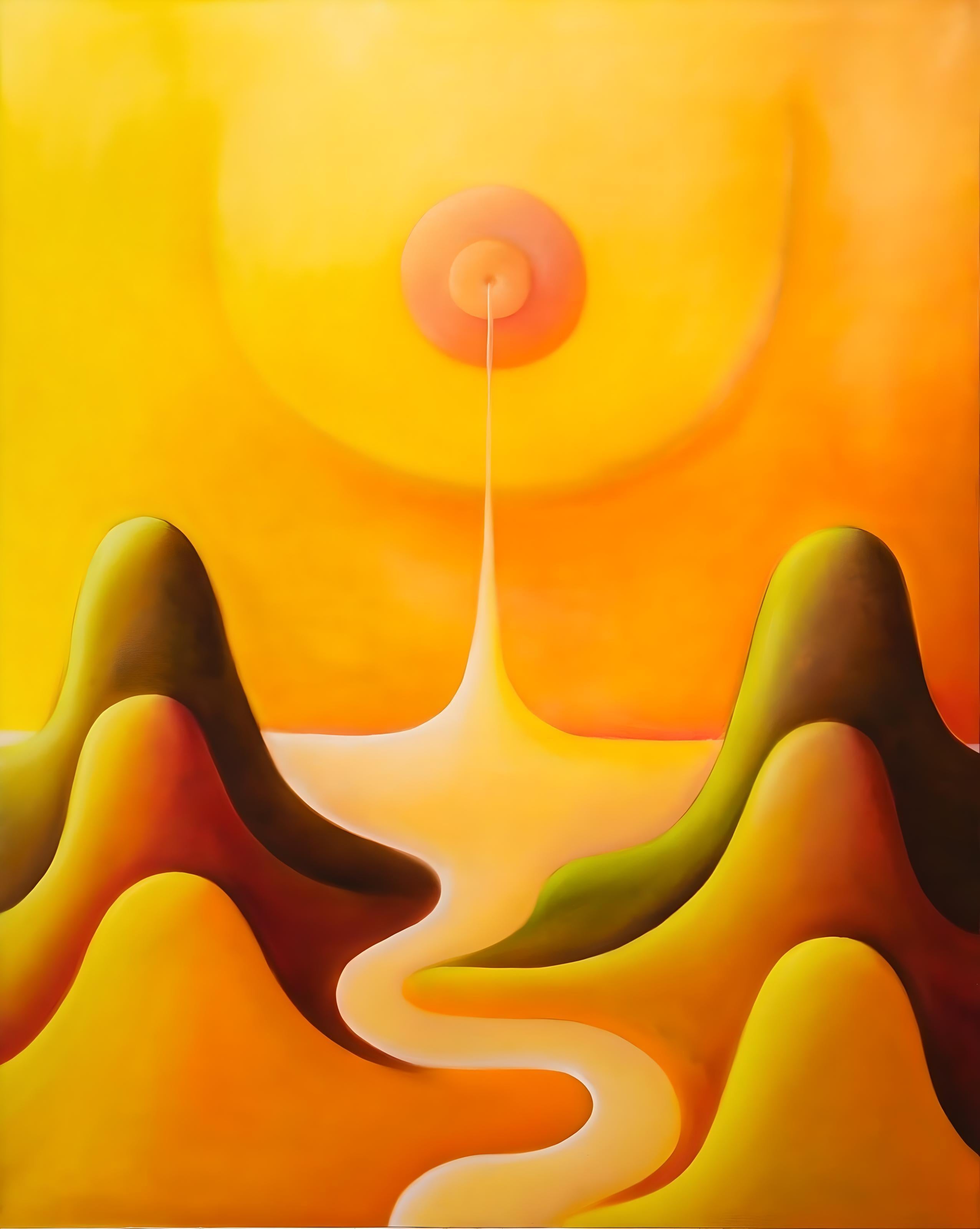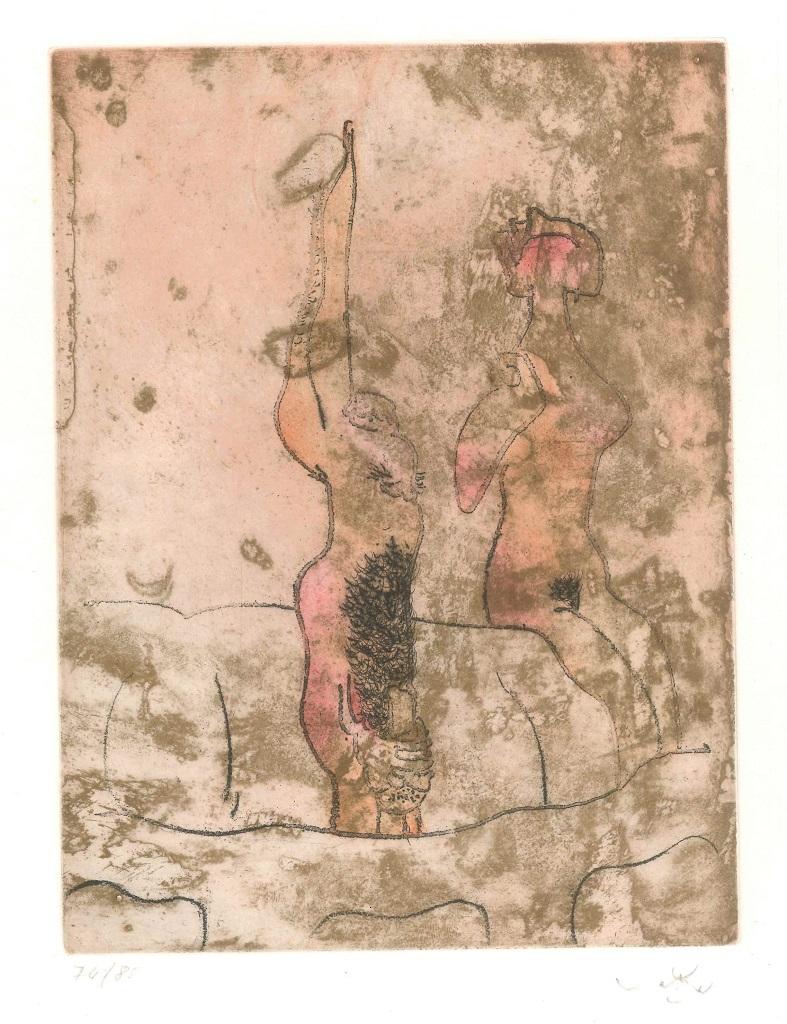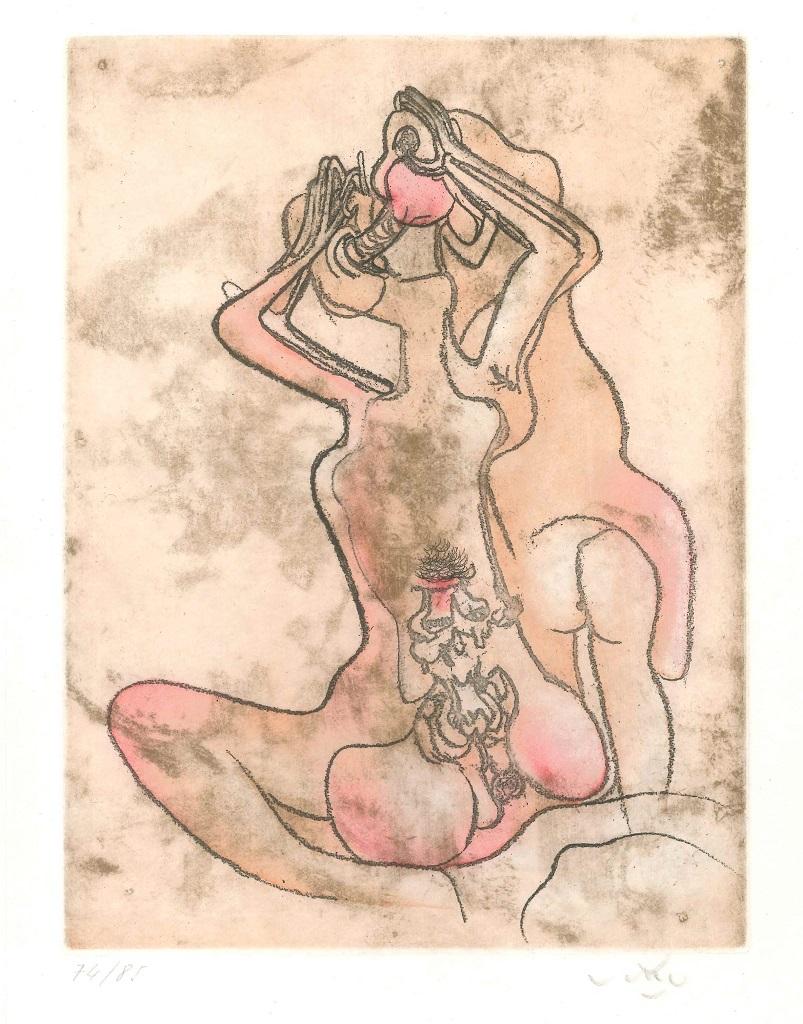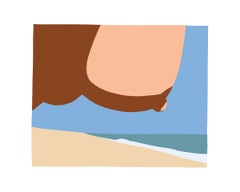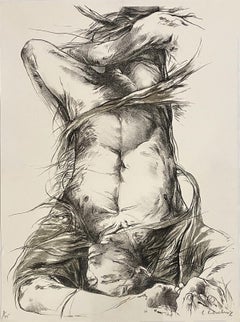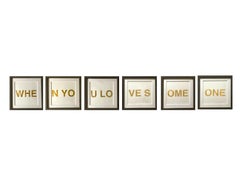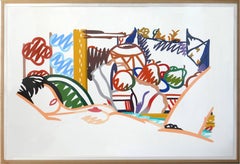
Monica Nude and Cezanne, Color Silkscreen on Sturdy Card, Framed, 1994
View Similar Items
Want more images or videos?
Request additional images or videos from the seller
1 of 6
Tom WesselmannMonica Nude and Cezanne, Color Silkscreen on Sturdy Card, Framed, 19941994
1994
About the Item
- Creator:Tom Wesselmann (1931 - 2004, American)
- Creation Year:1994
- Dimensions:Height: 44.5 in (113.03 cm)Width: 61 in (154.94 cm)
- Medium:
- Movement & Style:
- Period:
- Condition:
- Gallery Location:Miami Beach, FL
- Reference Number:1stDibs: LU45332883601
About the Seller
4.9
Recognized Seller
These prestigious sellers are industry leaders and represent the highest echelon for item quality and design.
Established in 2000
1stDibs seller since 2016
225 sales on 1stDibs
Typical response time: 1 hour
More From This SellerView All
- Boobs, From the Series Why This Restlessness? Limited edition printBy Casey WatermanLocated in Miami Beach, FLBoobs, 2018, From the Series Why This Restlessness? by Casey Waterman Archival Inkjet Print Image size: 17.5 in. H x 22 in. W Sheet Size: 24 in....Category
2010s Contemporary Nude Prints
MaterialsColor, Archival Ink, Archival Paper
- Unititled male nude limited edition printLocated in Miami Beach, FLUnititled male nude by Luis Caballero Lithography on paper Limited edition print Edition 8/75 Size: 15 in H x 10.7 in W Signed in the lower right corner. Numbered in the lower left ...Category
1990s Figurative Prints
MaterialsLithograph, Paper
- When You Love Someone!. From the Origin seriesBy Casey WatermanLocated in Miami Beach, FLWhen You Love Someone, 2015 by Casey Waterman Metal Gold Leaf on Archival Paper Framed Dimensions: The image size is 8.5 in H x 8.5 in W The sheet size is 11 in H x 11 in W Frame si...Category
2010s Contemporary Abstract Paintings
MaterialsGold, Gold Leaf
- The Kingdom 01. From the series Making Sense. Abstract color photographBy Angelica TcherassiLocated in Miami Beach, FLThe Kingdom 01, by Angelica Tcherassi From the series "Making Sense" Photo Rag Hannemuhle 308grs Sheet size 59 H x 47.2 W inches. Image size 51.1 ...Category
2010s Abstract Abstract Prints
MaterialsColor, Archival Pigment
- That Same Old Love 3, From the Universe Within series. Abstract color photographBy Angelica TcherassiLocated in Miami Beach, FLThat Same Old Love 03, 2022, by Angelica Tcherassi From the series "Universe Within". Photo Rag Hannemuhle 308grs Sheet size 59 H x 47.2 W inches. Image size...Category
2010s Abstract Abstract Prints
MaterialsColor, Archival Pigment
- The Kingdom 02. From the series Making Sense. Abstract color photographBy Angelica TcherassiLocated in Miami Beach, FLThe Kingdom 02, by Angelica Tcherassi From the series "Making Sense" Photo Rag Hannemuhle 308grs Sheet size 39.3 H x 27.5 W inches. Image size 33 H x 22.8 W inches. Edition of 22 Un...Category
2010s Abstract Abstract Prints
MaterialsColor, Archival Pigment
You May Also Like
- KabbalahBy Richard MeierLocated in New York, NYRichard Meier Kabbalah, 2011 Silkscreen collage with hand-coloring and photography sheet size: 30" x 30" signed numbered dated in pencil by the artist edition of 50 Richard M...Category
Contemporary Abstract Prints
MaterialsMixed Media, Screen
- Shiny Nude (Stealingworth, 33)By Tom WesselmannLocated in New York, NYTom Wesselmann Shiny Nude (Stealingworth, 33), 1977 Silkscreen on glossy cast-coated Kromekote paper 8 × 8 inches Edition 489/1000 Pencil numbered 489/1000 with artists printed name on the verso; Held in original stamped envelope Distributed by the Museum of Modern Art; printed by Unity Engraving Co. Unframed "Shiny Nude" - a dazzling limited edition, pencil numbered print features all of the hallmarks of the risque art arising from the sexual revolution of the 1960s and 1970s- saturated lips, full pubic hair...Category
1970s Pop Art Nude Prints
MaterialsScreen
- Custom Print I (from 11 Pop Artist, Volume I) I Dream of Jeannie & Blue CarBy Peter PhillipsLocated in New York, NYPeter Phillips Custom Print I (from 11 Pop Artist, Volume I), 1965 Silkscreen on foil coated paper 24 × 20 inches Pencil signed, dated and numbered 100/200. Unframed This dazzling, ...Category
1960s Pop Art Nude Prints
MaterialsScreen
- American Modernist Cubist Lithograph Screenprint "Reclining Woman" Max WeberBy Max WeberLocated in Surfside, FLReclining Cubist Nude Woman Max Weber (April 18, 1881 – October 4, 1961) was a Jewish-American painter and one of the first American Cubist painters who, in later life, turned to more figurative Jewish themes in his art. He is best known today for Chinese Restaurant (1915), in the collection of the Whitney Museum of American Art, "the finest canvas of his Cubist phase," in the words of art historian Avis Berman. Born in the Polish city of Białystok, then part of the Russian Empire, Weber emigrated to the United States and settled in Brooklyn with his Orthodox Jewish parents at the age of ten. He studied art at the Pratt Institute in Brooklyn under Arthur Wesley Dow. Dow was a fortunate early influence on Weber as he was an "enlightened and vital teacher" in a time of conservative art instruction, a man who was interested in new approaches to creating art. Dow had met Paul Gauguin in Pont-Aven, was a devoted student of Japanese art, and defended the advanced modernist painting and sculpture he saw at the Armory Show in New York in 1913. In 1905, after teaching in Virginia and Minnesota, Weber had saved enough money to travel to Europe, where he studied at the Académie Julian in Paris and acquainted himself with the work of such modernists as Henri Rousseau (who became a good friend), Henri Matisse, Pablo Picasso, and other members of the School of Paris. His friends among fellow Americans included some equally adventurous young painters, such as Abraham Walkowitz, H. Lyman Sayen, and Patrick Henry Bruce. Avant-garde France in the years immediately before World War I was fertile and welcoming territory for Weber, then in his early twenties. He arrived in Paris in time to see a major Cézanne exhibition, meet the poet Guillaume Apollinaire, frequent Gertrude Stein's salon, and enroll in classes in Matisse's private "Academie." Rousseau gave him some of his works; others, Weber purchased. He was responsible for Rousseau's first exhibition in the United States. In 1909 he returned to New York and helped to introduce Cubism to America. He is now considered one of the most significant early American Cubists, but the reception his work received in New York at the time was profoundly discouraging. Critical response to his paintings in a 1911 show at the 291 gallery, run by Alfred Stieglitz, was an occasion for "one of the most merciless critical whippings that any artist has received in America." The reviews were "of an almost hysterical violence." He was attacked for his "brutal, vulgar, and unnecessary art license." Even a critic who usually tried to be sympathetic to new art, James Gibbons Huneker, protested that the artist's clever technique had left viewers with no real picture and made use of the adage, "The operation was successful, but the patient died."[8] As art historian Sam Hunter wrote, "Weber's wistful, tentative Cubism provided the philistine press with their first solid target prior to the Armory Show." The Cellist...Category
Mid-20th Century Cubist Abstract Prints
MaterialsScreen
- Silkscreen Surrealist Pop Art Print "Pas De Deux"By Michael KniginLocated in Surfside, FLPrint without matte is 19" X 13". Michael Knigin was born in 1942 in Brooklyn, NY. He attended and graduated from Tyler School of Art, Temple University. He received a Ford Founda...Category
21st Century and Contemporary 85 New Wave Abstract Prints
MaterialsScreen
- Keith Haring Theater der Welt Frankfurt (Keith Haring 1985)By Keith HaringLocated in NEW YORK, NYKeith Haring, Theater der Welt Lithograph, Frankfurt, Germany 1985: Original 1st printing produced during Haring's lifetime. Bold, stand-out colors that make for brilliant, largely s...Category
1980s Pop Art Nude Prints
MaterialsScreen

